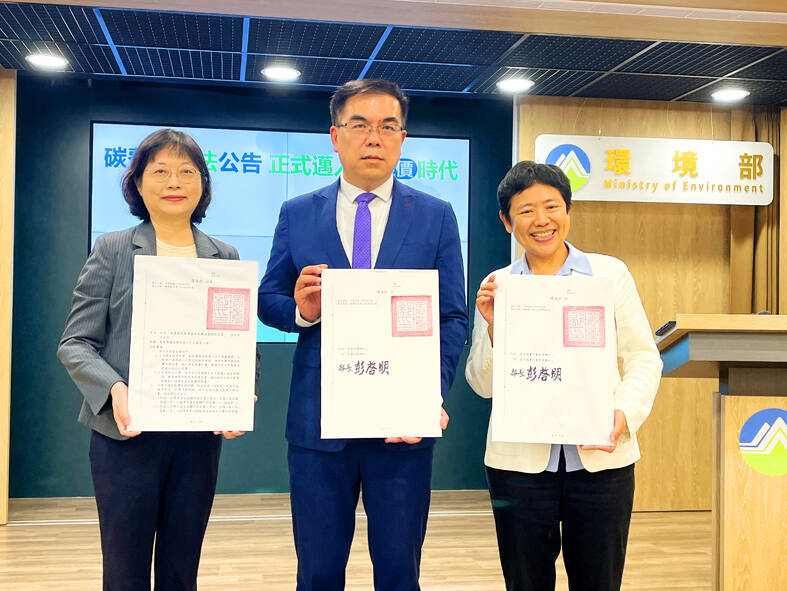In an era where corporate actions are under increasing scrutiny, the notion of Corporate Social Responsibility (CSR) has evolved beyond traditional checkbook philanthropy.
Today’s businesses recognize that meaningful engagement—rooted in community involvement and sustainable practices—can drive profitability and positive social impact. This shift reflects a growing consensus that companies cannot operate in a vacuum; their success is intrinsically tied to the well-being of the communities and environments they affect.
The Shift from Philanthropy to Impact
Historically, CSR initiatives often involved donating a portion of profits to charitable causes or engaging in community service projects. While these efforts are valuable, they frequently lack a strategic alignment with the core business operations, resulting in limited long-term impact. The new age of CSR emphasizes a more integrated approach, where companies embed social and environmental considerations into their business models. This transformation involves recognizing that the challenges facing society—such as climate change, inequality, and social justice—require proactive, multifaceted responses.
As noted by Sue Bingham, founder and principal of HPWP Group, “CSR initiatives don’t have to be large and headline-making… your approach to social responsibility might be smaller.” The emphasis is now on creating sustainable practices that can yield tangible results over time, rather than relying solely on monetary contributions to external causes.
Real-World Examples of Evolving CSR Initiatives
Many companies are leading the way in this new paradigm of CSR by implementing initiatives that prioritize sustainability and social equity. For example, consider the actions of various businesses that have embraced sustainable practices at their core.
One notable example is the LEGO Group, which committed to reducing its box sizes by 14% nearly a decade ago, aligning with a broader mission to create a more sustainable toy industry. This initiative reduces waste and serves as a reminder of how product design can directly contribute to environmental goals. LEGO’s commitment extends beyond packaging; it also invests in sustainable materials and engages with customers on environmental education.
Similarly, many organizations recognize the value of employee engagement in their CSR efforts. Volunteering and community involvement offer opportunities for employees to contribute to social causes while fostering stronger connections with customers and investors. “Volunteering is a tremendous opportunity for employees and employers that too often gets overlooked,” says Bingham. By encouraging employee participation in community initiatives, businesses can enhance their social impact while boosting morale and retention.
According to Sheldon Yellen, CEO of BELFOR, focusing on restoration rather than replacement can also aid CSR efforts by significantly reducing waste in the restoration industry. “Our focus is on restoring rather than replacing damaged properties, which drastically reduces the amount of waste that would otherwise end up in landfills,” he explains. For example, initiatives like BELFOR’s partnership with Treedom and their “Digital Forest” project highlight how businesses can move beyond traditional philanthropy. By actively planting trees to promote biodiversity, capture carbon emissions, and support local communities, companies can create lasting environmental benefits that resonate with both their values and the communities they serve.
The Evolution of CSR Approaches
As societal expectations evolve, many organizations are reassessing their CSR strategies to align with a broader commitment to sustainability. In recent years, companies have shifted from reactive measures—responding to crises or disasters—to proactive strategies that emphasize sustainability as a core value. This change is motivated by a recognition that industries play a pivotal role in shaping a sustainable future.
This evolution of CSR represents a fundamental shift in how companies perceive their responsibilities. Modern businesses understand that their long-term success is intertwined with their ability to address pressing social and environmental challenges. As Bingham points out, “In today’s world of work, we are evolving new ways of working… CSR promises to be something of a [universal cure all] at this time, boosting morale, strengthening engagement, and ultimately leading to higher levels of performance and retention.”
Practical Advice for Deepening Community Engagement
- Leverage Existing Strengths: Begin by identifying what your organization does best and build upon that foundation. For instance, companies already engaged in sustainable practices can enhance their efforts by aligning CSR initiatives with core operations.
- Encourage Open Conversations: Foster a culture of dialogue around sustainability and social responsibility. By engaging employees in discussions about relevant issues, companies can tap into diverse perspectives and generate innovative ideas for impactful initiatives.
- Promote Collaboration: Form partnerships with other organizations and stakeholders committed to similar values. Collaborating can amplify the impact of CSR efforts, as sharing resources and expertise can lead to smarter, more effective practices.
- Empower Employees: Involve employees in decision-making processes related to CSR initiatives. Understanding the issues that resonate with their workforce can inform more relevant and impactful programs. As Bingham advises, “Make sure you’re giving [employees] a voice in the decision-making process.” Ask follow-up questions like “What issues do they care about?” to better understand which initiatives to prioritize.
- Frame Discussions Positively: Approach CSR conversations as opportunities for exploration rather than debates. This encourages individuals to engage in small, personal changes that can lead to larger collective impacts over time.
By following these strategies, organizations can cultivate a culture of social responsibility that extends beyond surface-level initiatives. As Yellen highlights, “These individual decisions collaboratively add up and make a difference.”
Businesses have a crucial role to play in addressing the pressing challenges of our time. By embedding sustainability and social equity into their core strategies, organizations can create a ripple effect of positive change that benefits not only their bottom line but also society at large. In doing so, they set a powerful precedent for what responsible corporate citizenship can—and should—look like in the 21st century.
SDGs, Targets, and Indicators
1. Which SDGs are addressed or connected to the issues highlighted in the article?
- SDG 8: Decent Work and Economic Growth
- SDG 9: Industry, Innovation, and Infrastructure
- SDG 12: Responsible Consumption and Production
- SDG 13: Climate Action
- SDG 17: Partnerships for the Goals
The article discusses the shift from traditional philanthropy to more integrated and sustainable approaches to corporate social responsibility. This shift aligns with the goals of promoting decent work and economic growth (SDG 8), fostering industry innovation and infrastructure (SDG 9), encouraging responsible consumption and production (SDG 12), taking action on climate change (SDG 13), and promoting partnerships for the goals (SDG 17).
2. What specific targets under those SDGs can be identified based on the article’s content?
- SDG 8.4: Improve progressively, through 2030, global resource efficiency in consumption and production and endeavor to decouple economic growth from environmental degradation
- SDG 9.2: Promote inclusive and sustainable industrialization and, by 2030, significantly raise industry’s share of employment and gross domestic product, in line with national circumstances, and double its share in least developed countries
- SDG 12.2: By 2030, achieve the sustainable management and efficient use of natural resources
- SDG 13.3: Improve education, awareness-raising, and human and institutional capacity on climate change mitigation, adaptation, impact reduction, and early warning
- SDG 17.17: Encourage and promote effective public, public-private, and civil society partnerships, building on the experience and resourcing strategies of partnerships
Based on the article’s content, the targets identified are related to improving resource efficiency and decoupling economic growth from environmental degradation (SDG 8.4), promoting sustainable industrialization and increasing industry’s share of employment and GDP (SDG 9.2), achieving sustainable management and efficient use of natural resources (SDG 12.2), improving education and awareness on climate change (SDG 13.3), and promoting effective partnerships (SDG 17.17).
3. Are there any indicators mentioned or implied in the article that can be used to measure progress towards the identified targets?
- Indicator 8.4.1: Material footprint, material footprint per capita, and material footprint per GDP
- Indicator 9.2.1: Manufacturing value added as a proportion of GDP and per capita
- Indicator 12.2.1: Material footprint, material footprint per capita, and material footprint per GDP
- Indicator 13.3.1: Number of countries that have integrated mitigation, adaptation, impact reduction, and early warning into primary, secondary, and tertiary curricula
- Indicator 17.17.1: Amount of United States dollars committed to public-private and civil society partnerships
The article does not explicitly mention indicators, but based on the identified targets, the indicators that can be used to measure progress are related to material footprint, manufacturing value added, integration of climate change education, and financial commitments to partnerships.
Table: SDGs, Targets, and Indicators
| SDGs | Targets | Indicators |
|---|---|---|
| SDG 8: Decent Work and Economic Growth | 8.4: Improve progressively, through 2030, global resource efficiency in consumption and production and endeavor to decouple economic growth from environmental degradation | 8.4.1: Material footprint, material footprint per capita, and material footprint per GDP |
| SDG 9: Industry, Innovation, and Infrastructure | 9.2: Promote inclusive and sustainable industrialization and, by 2030, significantly raise industry’s share of employment and gross domestic product, in line with national circumstances, and double its share in least developed countries | 9.2.1: Manufacturing value added as a proportion of GDP and per capita |
| SDG 12: Responsible Consumption and Production | 12.2: By 2030, achieve the sustainable management and efficient use of natural resources | 12.2.1: Material footprint, material footprint per capita, and material footprint per GDP |
| SDG 13: Climate Action | 13.3: Improve education, awareness-raising, and human and institutional capacity on climate change mitigation, adaptation, impact reduction, and early warning | 13.3.1: Number of countries that have integrated mitigation, adaptation, impact reduction, and early warning into primary, secondary, and tertiary curricula |
| SDG 17: Partnerships for the Goals | 17.17: Encourage and promote effective public, public-private, and civil society partnerships, building on the experience and resourcing strategies of partnerships | 17.17.1: Amount of United States dollars committed to public-private and civil society partnerships |
Source: forbes.com






